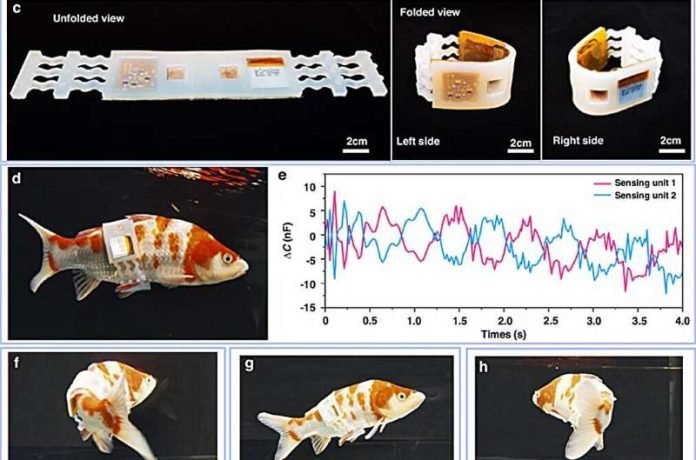
This innovative development in aquatic research introduces a wearable electronic device, or “smart vest,” for fish that promises to revolutionize how we study and understand aquatic life.
Created by a team from the National University of Defense Technology, this vest is equipped to detect the subtlest changes in water flow caused by fish movements, thanks to its advanced MXene hydrogel composition.
Traditional methods for observing fish behavior have predominantly relied on vision-based systems, which come with their own set of limitations, including restricted observation ranges and limited operational durations underwater.
The smart vest, detailed in an article for Microsystems & Nanoengineering, addresses these challenges head-on by providing a noninvasive and highly sensitive solution for monitoring aquatic life.
At the core of the vest’s design are its hydrogel electrodes, a sophisticated blend of MXene nanosheets and holey-reduced graphene oxide, enriched with ionic liquids.
This composition is not just a testament to the device’s sensitivity towards detecting water pressure changes; it also ensures the device’s durability and functionality in underwater environments.
The device features a pair of pseudocapacitive pressure-sensing units that are adept at capturing the disturbances in the flow field caused by fish movements, whether they’re turning, accelerating, or diving.
This level of precision opens up new avenues for observing fish behavior in their natural habitats, free from the intrusive and limiting nature of conventional observation methods.
Dr. Jiafei Hu, leading the research, highlighted the significance of this breakthrough, emphasizing its potential to transcend the limitations of existing systems and foster a deeper understanding of fish behaviors, their ecological interactions, and the dynamics of aquatic ecosystems.
The implications of this smart vest extend beyond academic research. It has the potential to significantly contribute to environmental conservation efforts, offering insights into the health of aquatic ecosystems and the behaviors of fish within them.
Additionally, it can aid in the development of more sophisticated underwater monitoring technologies, further expanding our ability to study and protect marine life.
This wearable device for fish marks a significant leap forward in the field of aquatic research, promising a future where we can gain unprecedented insights into the underwater world with minimal disruption to the natural behaviors and habitats of its inhabitants.
The research findings can be found in Microsystems & Nanoengineering.
Copyright © 2024 Knowridge Science Report. All rights reserved.



